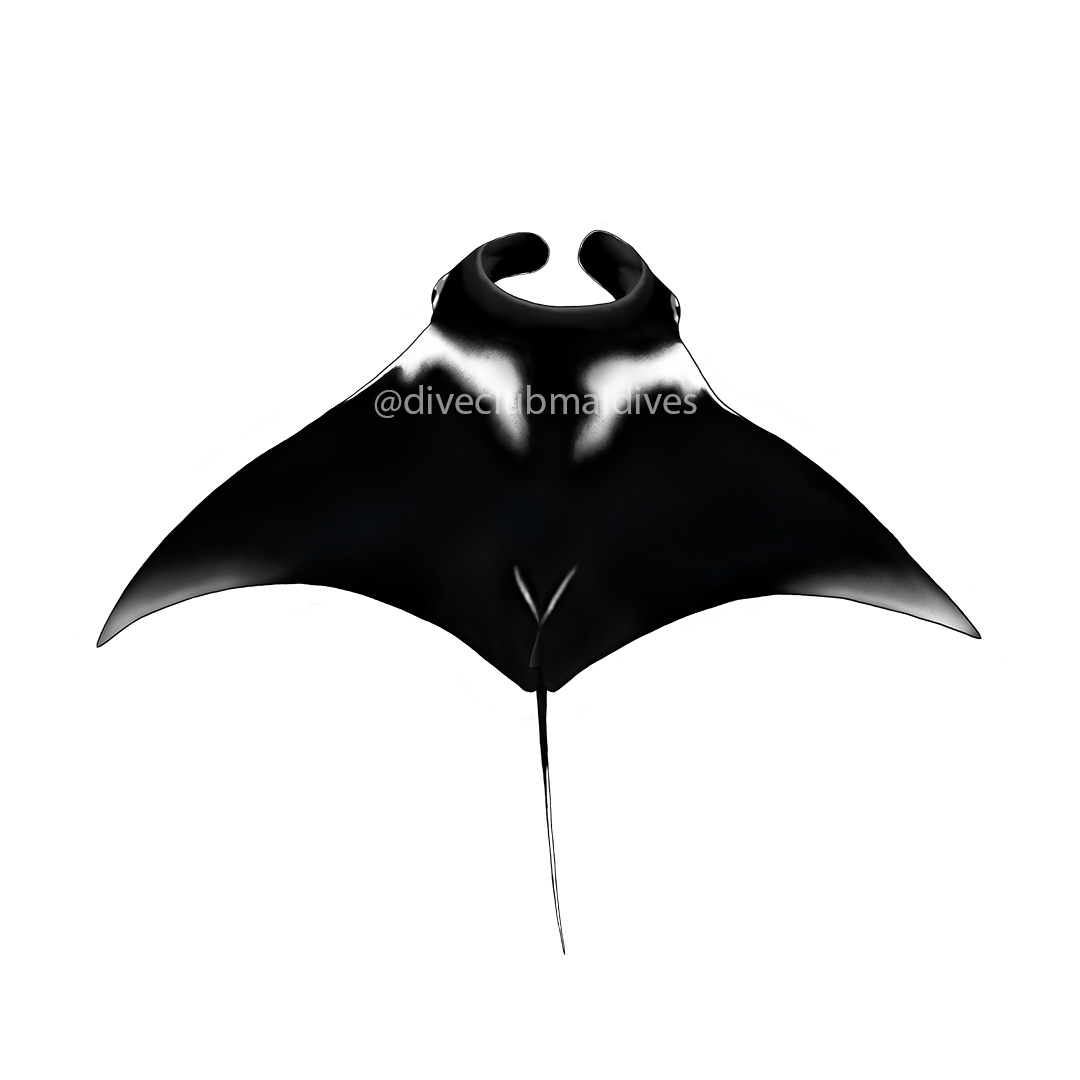English Name: Oceanic Manta Ray
Local Name: En’ Madi
Size: 7 m
Family: Mobulidae
Order: Myliobatiformes
Distinctive Characters: An extremely large ray with a vaguely kite-shaped disc and a large protruding head with a wide, terminal mouth. Disc width approximately 2.1-2.3 x length. Pectoral fins narrowly falcate, with convex anterior margins and concave posterior margins. Pectoral fin apices acutely pointed. Pelvic fins very small. One small dorsal fin present at base of tail; not falcate.
Head pronounced; extending well forward of pectoral fins. Slit-like spiracles posterior to eyes. Mouth very broad; 16-17% of disc width. Cephalic lobes long, broad, and highly flexible.
Denticle bands present on upper jaw. Band of vestigial teeth present on lower jaw.
Ridges of dermal denticles run lengthwise along upper and lower surfaces of disc. Tail whiplike. One small caudal sting encased in a noticeable calcified bulge near base of tail.
Colour: Dorsum predominantly black, usually with varying white or grey shoulder markings. Anterior margin of shoulder patterns level with spiracles, run parallel to curve of upper jaw. V-shaped marking anterior to tail extends forward to mid-back, occasionally curving outward to reach pectoral fin apices. Mouth and inner surface of cephalic lobes usually black or dusky; outer/ventral surface white.
Ventrum mostly white with distinct black spots on 5th gill slits and highly variable dusky or black markings elsewhere. Tail uniformly black.
BLACK VARIATION: Dorsum, mouth, and cephalic lobes uniformly black. Ventrum either completely black or with a highly variable central white flash.
WHITE VARIATION: Similar to the standard pattern but with white pectoral fin apices that often merge into shoulder markings and V on back. Tail white.
Habitat and Biology: Pelagic in tropical/subtropical and warm temperate seas. Inhabits coastal areas with strong upwellings, oceanic islands and seamounts, and open ocean. Surface to at least 1000m.
Distribution:Circumtropical/subtropical.
Remarks: 1,000 individual oceanic manta rays have now been identified in Maldivian waters. According to the Maldives Manta Conservation Programme (MMCP) – the Manta Trust’s flagship project, which confirmed the 1,000th individual – this makes the Maldives home to the world’s third largest population of the species.
